Data visualisation is an important step in data analysis, permitting you to interpret and communicate insights efficaciously. Python gives a variety of libraries for developing visualisations, with Seaborn standing out for its simplicity and versatility. Seaborn is created on top of Matplotlib, providing an excessive-level interface for drawing attractive and informative statistical graphics. If you’re looking to master these tools, enrolling in a Python learning course can help you gain the necessary skills to effectively utilize the Seaborn tutorial for your data visualization needs.
In this guide, we’ll explore the fundamentals of employing Seaborn for creating visualizations with data, showcasing its capabilities through real-world examples.
Why Use Seaborn?
Seaborn seamlessly integrates with data systems, making it a top choice for visualizing data stored in data frames. It offers several key benefits:
Ease of Use: Simplifies the procedure of creating complex plots.
Integration with Pandas: Works well with Pandas DataFrames.
Variety of Plots: Helps a wide range of plot types, including relational, categorical, and distribution plots.
Beautiful Default Styles: Comes with aesthetically pleasing default colour palettes and themes.
Getting Started with Seaborn
Before you can start using Seaborn, you’ll need to install it. If you haven’t already, you can install Seaborn using pip:

Once installed, you can import Seaborn alongside other essential libraries:
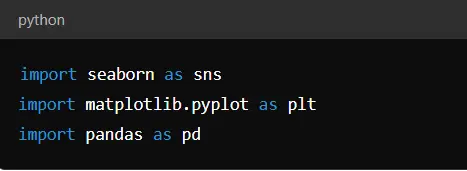
Creating Your First Seaborn Plot
To begin with, let’s start with a simple example: a scatter plot. Imagine you have a dataset containing information about different species of penguins, including their flipper length and body mass. In this case, you can easily visualize the relationship between these two variables by using Seaborn’s “scatterplot” function:
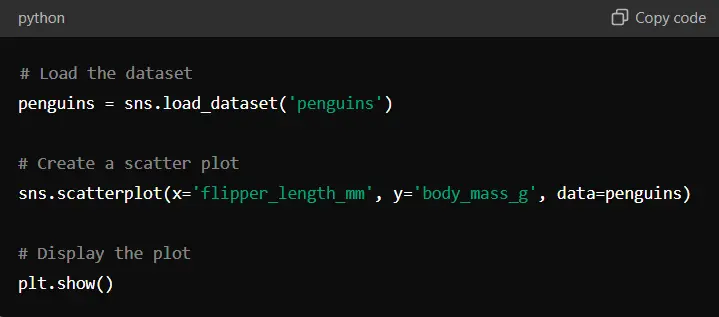
This code snippet creates a scatter plot that shows the relationship between the flipper period and body mass for exclusive penguin species. Seaborn automatically handles the aesthetics, ensuring that the plot is both informative and visually attractive.
Customizing Your Visualizations
While Seaborn’s default settings are often sufficient, you can easily customize your plots to suit your needs. For example, you can change the colour palette, add titles, and adjust the size of the plot:
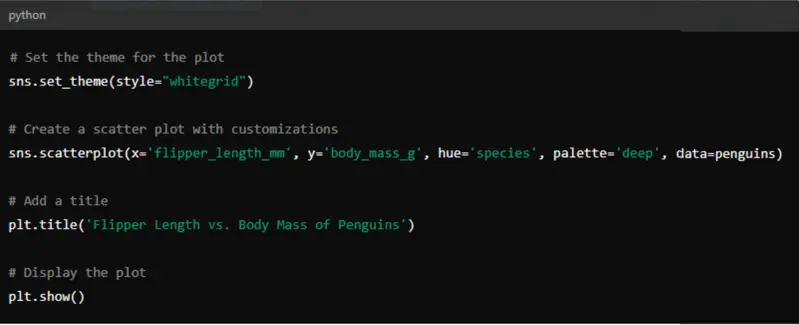
In this example, the ‘hue’ parameter is used to color the points by species, and the ‘palette’ parameter changes the color scheme. The ‘set_theme’ function is used to apply a dark grid style to the plot, and the ’title’ method adds a title.
Advanced Visualizations with Seaborn
Seaborn excels at creating more complex statistical visualizations. Here are a few examples:
1. Heatmaps: Visualize the correlation between variables in a dataset.
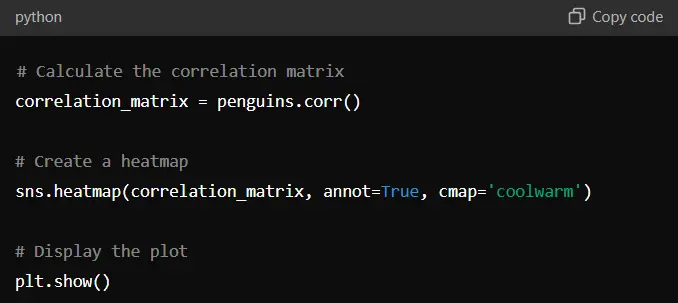
2. Pair Plots: Visualize relationships between all pairs of variables in a dataset.
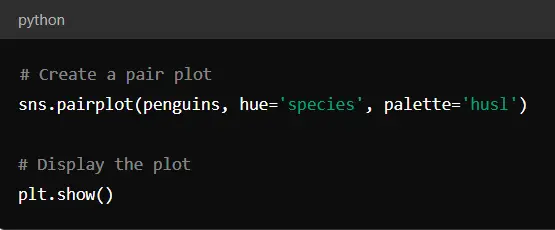
3. Violin Plots: Visualize the distribution of a dataset and its probability density.

Check out the video to learn Python Seaborn Tutorial and Mastering Data Visualization Techniques
Conclusion
Seaborn is an incredibly effective and versatile library for data visualization in Python. Whether you are acting in exploratory data analysis or creating publication-ready graphics, Seaborn makes it smooth to supply lovely and significant plots. By studying Seaborn, you could liberate new insights out of your data and correctly communicate your findings to others. For those looking to deepen their skills, GALTech School, the best IT training institution in Kerala, offers data science and Python courses that will help you master Seaborn and other essential tools. Ready to take your data visualization skills to the next level? Join us at GALTech School today.







